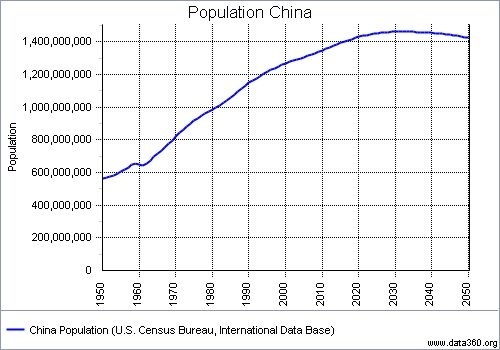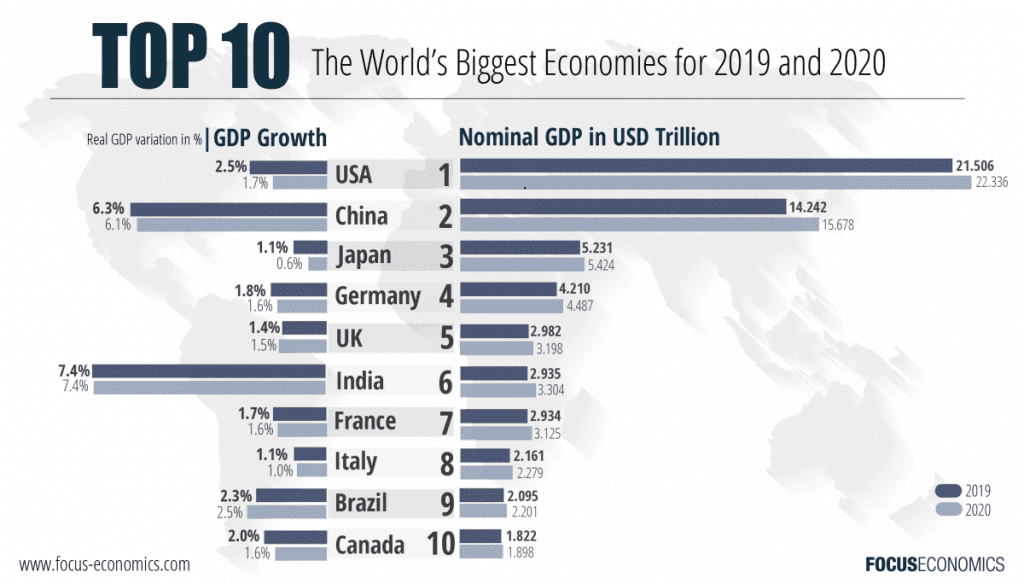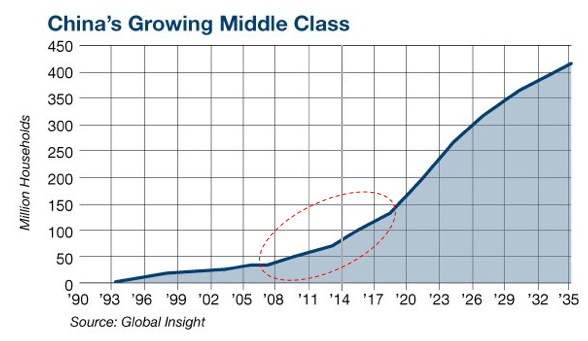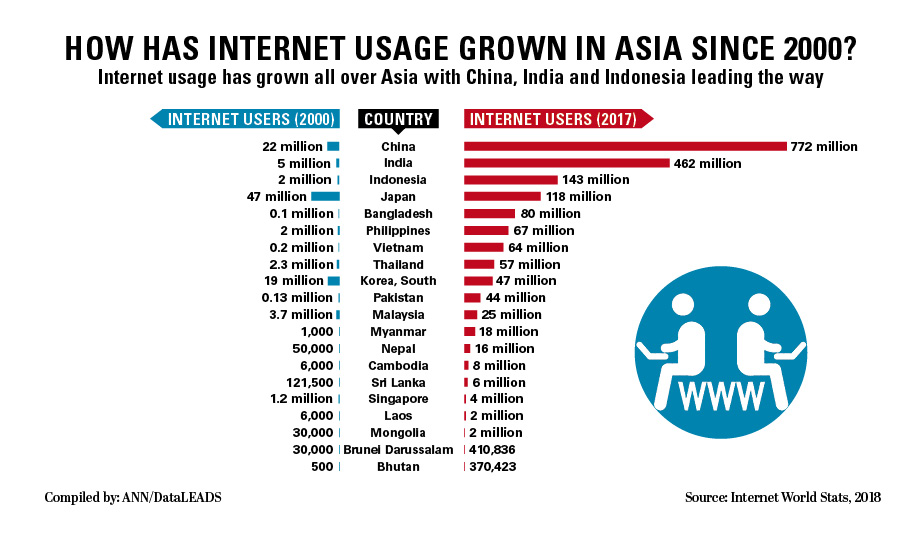The most common idea associated with international trade is to find profitable products to import goods from China and make your profit selling at home. Load up a container, hand it over to your freight forwarder and sell on Amazon or Ebay. There are many individuals who have setup companies and are successfully importing from China wholesale and making a good profit.
There’s obviously nothing at all wrong with this business model but I’m suggesting now that you start thinking about disrupting this trend and turn it around by exporting luxury products to China. My prediction is that this will be where the biggest profits will come from over the next 20 years and in this blog, I’ll explain why.
The Trend of Cheap Products From China is Ending
Everyone is looking for cheap goods with high profit margins to import from China. The problem in today’s environment is that selling Chinese goods of low quality, cheap products has become a false economy and consumers are now wise to this. Over the years many consumers have bought cheap products, imported from a cheap Chinese supplier, only to find they break or fail quickly and have to be replaced with a better quality product further down the line. In China, it’s the same thinking and the population is now starting to look to order high end, quality products coupled with excellent customer service and fast delivery.
Now is the time to change your thinking and turn from importing from China to UK and instead think about China trade deals but exporting to China and the massive market that there is.
The Population Of China
So let’s start with some basic numbers. How many people are in China and what’s the size of the economy? After all, one of the most important factors in our market research is the size of the market that we’re going to sell to.
The population of China is staggering at 1.371 billion people and is the world’s most populous nation.

China has over 160 cities that have a population of over 1 million people. 53 cities in China have a population greater than two million people. Compare this for a moment with the US, who have just 10 cities with more than 1 million and the UK has just the one, London.
China’s biggest city is Guangzhou with a population of 44,294,245 (as of 2019). New York is America’s biggest city with a population of just 8,500,000 which is slightly bigger than London at 8,136,000.
Two of China’s most well-known cities include, Shanghai which has a population of 22,685,000 and Beijing, weighing in at 20,390,000.
To see the staggering growth of Shanghai from farmland to a modern city in just 20 years, watch this 20 second video:
This gives you an idea of the sheer size and scale of the population in China and any potential market to export goods to. You only need to find a niche range of products which even if you sold to just .01% of the Chinese population, you would have sold to 1,371,000 customers.
The future is quite literally mind-blowing as some estimates state that by 2025 China will have 221 cities with a population of at least 1 million. No other country and compare to this as far a market size.
Pay attention to these numbers, they are hugely significant. You should no longer be looking to import from China but to export to it.
China’s Economy
In economic terms, China’s economy ranks second, behind the USA (measured in nominal GDP in US Dollars). Without doubt China is gaining on the US economy with some claiming that it’s already overtaken the US as the world’s number one economy. Whether or not it’s number one or number two right now, really doesn’t matter for the argument of importing goods to China, it will become number one in the not too distant future.
GDP growth outstrips the US at 6.3% for 2019 compared to 2.5%. It’s just a matter of time before China takes the top spot.

In 1978, China started a programme of economic reforms, at that time ranking ninth (GDP). China as we know became the manufacturing hub of the world and 35 years later, jumped to the current position of number two on the word economic stage.
China’s Middle Class
Here’s the biggest reason why you don’t want to import from China but export to it.
Over the last 20 years or so, China’s middle class has been flourishing. In 1999 China’s middle class was 2% of its population (29 million people) but that has now increased to 39% or over 400 million people. With a US middle class of just 120 million, the growing middle class is significant and not to be ignored. The Chinese government defines middle class incomes between the range of 60,000 to 500,000 yuan per annum ($7,250 to $62,500) and with living costs lower in China, even the bottom end salaries enjoy a good standard of living.

Perhaps a case in point, car sales in China have grown for 26 straight years, with 28 million new cars sold in 2018. To give an idea for reference, US consumers bought 17 million cars in 2018 and in the European Union, 15.5 million cars were sold.
Millennials
An important feature of China’s emerging middle class that’s apparent is age. This upcoming middle class is young in comparison to other developed markets around the world. For example, in the US, income generally reaches its optimal point between the age range of 45 to 54. This is due to the need for higher education coupled with both professional and personal life experience.
In China, higher paying jobs generally require higher levels of education, which the older generation weren’t able to obtain, so the government has made a substantial push for higher education for the young, which will bring the wealthiest consumer to an age range of 25 to 44.
It’s estimated that this emerging middle class won’t meet it’s expected spending potential for approximately 20 years, so there’s time to research, put together a business plan and make headway into China now.
China And The Internet
Unsurprisingly, mobile and internet usage as exploded in the last 15 years. In 2006, just 10.5% of the population had access to the internet. This rose to a massive 54% by 2017, which believe it or not, is more than the entire population of Europe. This has brought about an equal increase in ecommerce and online shopping, with China responsible for 42% of the global market in 2017. While there is a big opportunity for online business in China, there’s a lot of competition so make sure you understand the basics of getting online before you take the plunge.

Looking at performance results of companies that have successfully marketed themselves in China, the winners have gained access to customers through digital and influencer marketing, as you may expect, attracting millennials.
WeChat is a huge marketing tool that must be utilised to identify and target customers for both online and offline sales. One very well known cosmetic brand uses WeChat to book facial treatments and another to access coupons and manage membership cards. Both innovative ways to use this social platform and take advantage of its user base.
China And International Travel
The Chinese are travelling internationally like never before. Yearly spending by Chinese tourists has grown by an astounding 1,380% – rocketing from $10 billion in 2000 to over $260 billion in 2016. To give you an idea of just how massive this is, over approximately the same period, US tourists spent $160 billion, an increase of 175% and their EU counterparts spent $388 billion, up 172%.
In 2018, Chinese tourists totaled 149.72 million, with some of the most popular destinations being Thailand, Japan, Vietnam, Singapore, America and Italy. The China Outbound Tourism Research Institute (COTRI) predicts that overseas trips by Chinese citizens will massively increase from last year’s figure of 145 million to more than 400 million by 2030.

This is significant because as Chinese tourists travel to other countries and experience higher end, more luxurious products and services, they experience that difference in quality. Taste for different, quality food and drink is opened and on their return home, they find they want the same quality of product or taste and are willing to pay. Filling the gap in these markets is a potential gold mine.
In addition, a higher proportion of travels are the younger generation as they are beginning to earn higher salaries as mentioned. This is a big market to cater for when they return home.
It’s worth noting that Chinese luxury shoppers, spending abroad are now responsible for 33% of the global market.
The Luxury Goods Market
China’s domestic luxury goods market has grown at a very comfortable rate of 20% in both 2017 and 2018, which have been driven by millennial’s and women. Interestingly and an important fact to take note of, millennial’s contributed to almost all of the incremental growth of China’s luxury market over the past year.
This young consumer population are well informed about luxury products and embrace trends, valuing whats cool and new on the market. Millennial women spend more on luxury than men, proven by more than 25% growth in cosmetics in 2018, while watches grew by less than 10%.
A UBS survey found that 71% of millennials have a positive outlook on their finances with 81% expecting their income to increase.
Perhaps in response to this growing demand of luxury goods, the Chinese government has reduced import VAT duties on luxury items coupled with brands narrowing the price gap with overseas markets, which has raised the purchases of luxury goods in China from 23% in 2015 to 27% in 2018 and is anticipated to increase to 50% by 2025. This means that Chinese consumers no longer have to travel outside of China and Hong Kong to make their luxury purchases.
Areas of Growth
China is a nation of savers, unlike the west, where we tend to be comfortable with taking loans and credit. Some 70% of China’s millennials own their own homes, which is double those of US millennials. Chinese households will save anywhere from 25% – 40% of their income which is one of the highest national saving rates in the world. While these households will continue to save, as incomes rise, so will expenditure.
As income rises, families tend to by more impulse products and small luxury items which is already happening in China. Housing and health are two areas that are fast-growing. Chinese are spending more on home ownership which will fuel the construction and furniture market. This may be an area to think about as an easier way to break into China. Freight forwarding won’t be a problem and with smaller home furnishings, drop shipping may be an option for smaller order quantity. Consider both air and sea freight depending on what you’re exporting.
Health is important to Chinese culture and with an aging population, spending will likely increase in this sector. Research will be needed to enter this market as naturopathy and diet as a form of healthcare is important to Chinese, however there are opportunities.
Jack Ma is Big on China
Jack Ma, the founder of Alibaba.com is as optimistic and upbeat as you can be on China in spite of a slow down in economic growth.
He sees the slow down in pace as good for China saying it’s healthy to slow down and even if growth slowed to 5%, China would still be one of the fastest growing economies. It’s impossible for China to continually grow at 10% per year. He compares how the government needs to act like an experienced driver, knowing when to drive slowly and when to drive fast. Slowing is sometimes needed.
Quality and Individuality
Jack Ma believes the focus for China should now be on quality, not quantity. This is what the people want. Young people want products that are unique to them, not what’s produced en mass and sold at the cheapest price. Now is a time where consumers want the one of a kind t-shirt, that’s of a better quality and this generation isn’t as worried about the cost. The days of mass production at low cost are ending.
Business leaders and entrepreneurs are optimistic, they always are or they wouldn’t be in business and China’s outlook is very positive. The Chinese government has grown the economy with a policy of investment in infrastructure and exporting. It’s been successful with it’s policy but when it comes to domestic consumption, this is something the government is not good at. This is the job of entrepreneurs and marketers.
China Importer Of The World
In the next 10 to 20 years, China is going to shift from exporting to importing and domestic consumption and move from infrastructure investment to infrastructure operations. This is not an opportunity for only China but an opportunity for the world.
Chinese consumers are curious, they want new things, to explore new tastes. To illustrate this point, Jack Ma had a meeting with Canada’s Prime Minister and was told they would like to sell Canadian lobsters to China. Jack Ma took the necessary steps and on the first day of being sold on Alibaba, 100,000 lobsters were sold. 100,000 lobsters in a single day. This increased to 150 tons over the year.
China will become the largest importer of the world and Jack Ma believes the only way this is going to happen is by use of the internet. There are 10 million people selling on Alibaba and more than 100 million regularly shop on the site. The internet and ecommerce is the key to importing success in China and without harnessing the power of the internet, it’s impossible.
Consider there are 1.4 billion people born globally after the 1980’s. This is the internet generation who live, breathe and sleep the internet. Everything they do is posted online, the information they get is all online, this generation do not read traditional newspapers.
The scope of domestic consumption in China is the biggest in the world. Being a part of it isn’t rocket science. Research, source, export and sell high quality products in China using the internet. This generation has everything at their disposal to do it, it just takes effort, time, some hard work and some investment. The risk could be well worth the reward.
Jack Ma says not to listen to the people that say “it will never work”. 15 years ago, many people told him that Alibaba could never work, “it’s too hard”. Now the company is valued at $500 billion. It took Walmart in the US over 60 years to reach the same value. It will work, if you do.
Luxury Spirits
Let’s look at just one luxury market in China that’s certainly gathering pace, spirits and alcohol. There’s a definite rise of social drinking culture which together with an increase in disposable income, again, younger consumers are driving this market. GlobalData, a recognized leader in business intelligence and analytics reports that the market is expected to reach over $450 billion by 2021 from $205 billion in 2016.
In 2016, the Chinese spirits market had 32.8% of global volume and 52.3% of the Asia-Pacific region with it projected to reach 46.9% and 66.2% respectively by 2021.
In line with the numbers already stated, China’s younger consumers who drink on social occasions along with the increasing numbers of female drinkers will play a key role in the years to come for the Chinese spirits market. Per capita spirits consumption was pegged at 7.3 liters in 2016, nearly a full liter over the global average of 6.4 liters and 6.2 liters in the Asia-Pacific region. China’s per capita spirits consumption is set to rise to 14.4 liters by 2021.
Specialty Spirits were worth $193.3 billion in 2016 and forecast to grow at 15.1% per year, dominating the overall spirits market right the way to 2021.
Conclusion
Why import from China when Chinese consumers want luxury goods from abroad and the potential market size is the biggest in the world?
China’s growth is phenomenal and as the middle class swells there will be opportunity to export to China like never before. Buck the trend and follow the numbers, the old import from China business model has had it’s day. Selling products to millions can be achieved by selling to just a .01% of the population.
Like anything worth doing in this world, it won’t be easy, there will be obstacles such as finding a good air freight carrier or freight forwarder, knowing what your shipping costs and import duty will be and understanding shipping terms. Familiarising yourself with customs clearance in China and a start by going to trade shows and making contact with suppliers.
If you’re looking at selling your own products, as a word of warning it’s worth considering protecting your intellectual property. Copyright claims in China can be an issue so familiarise yourself with this.
If you invest some time in research, educating yourself in exporting, source a range of products, the rewards are potentially bigger than anything we have seen before.
We’ve had a student that did exactly this and disrupted the trend after realising there was a bigger market to export wine to China, than import from China. She now has a successful company exporting to China and I suspect she will go from strength to strength.
Sources:
You Tube
Global Data
CSIS
Market Realist
McKinsey
The Guardian
World Atlas
Travel China Guide
Telegraph
Bain
Bloomberg
Focus Economics
Medium
Inquirer
Quora
We Forum
We Forum
Photo by chuttersnap on Unsplash
4 thoughts on “Export to China – The Biggest Profits Over the Next 20 Years”
Comments are closed.



I would like to receive free training for your import/export course. I am impressed by your article.
Hi Sayed, I have signed you up and you should receive an email from us every day for two weeks with a new lesson each day.
Thank you so much Mr Adan,you really opened my eyes today.I will start working on exporting to China.
I will be updating you with the progress report.
Thank you.
Ezeonu Damian
Hi Ezeonu, I’m so glad this helped you. Please do let me know your progress. Alan.